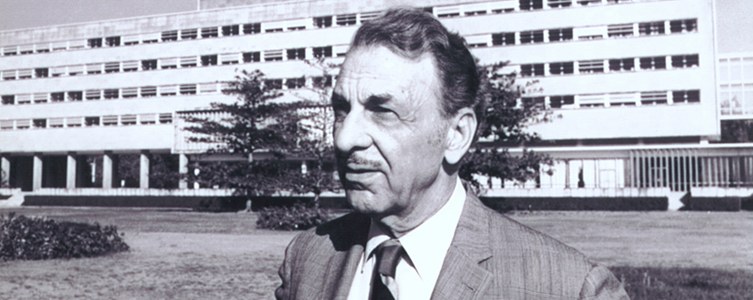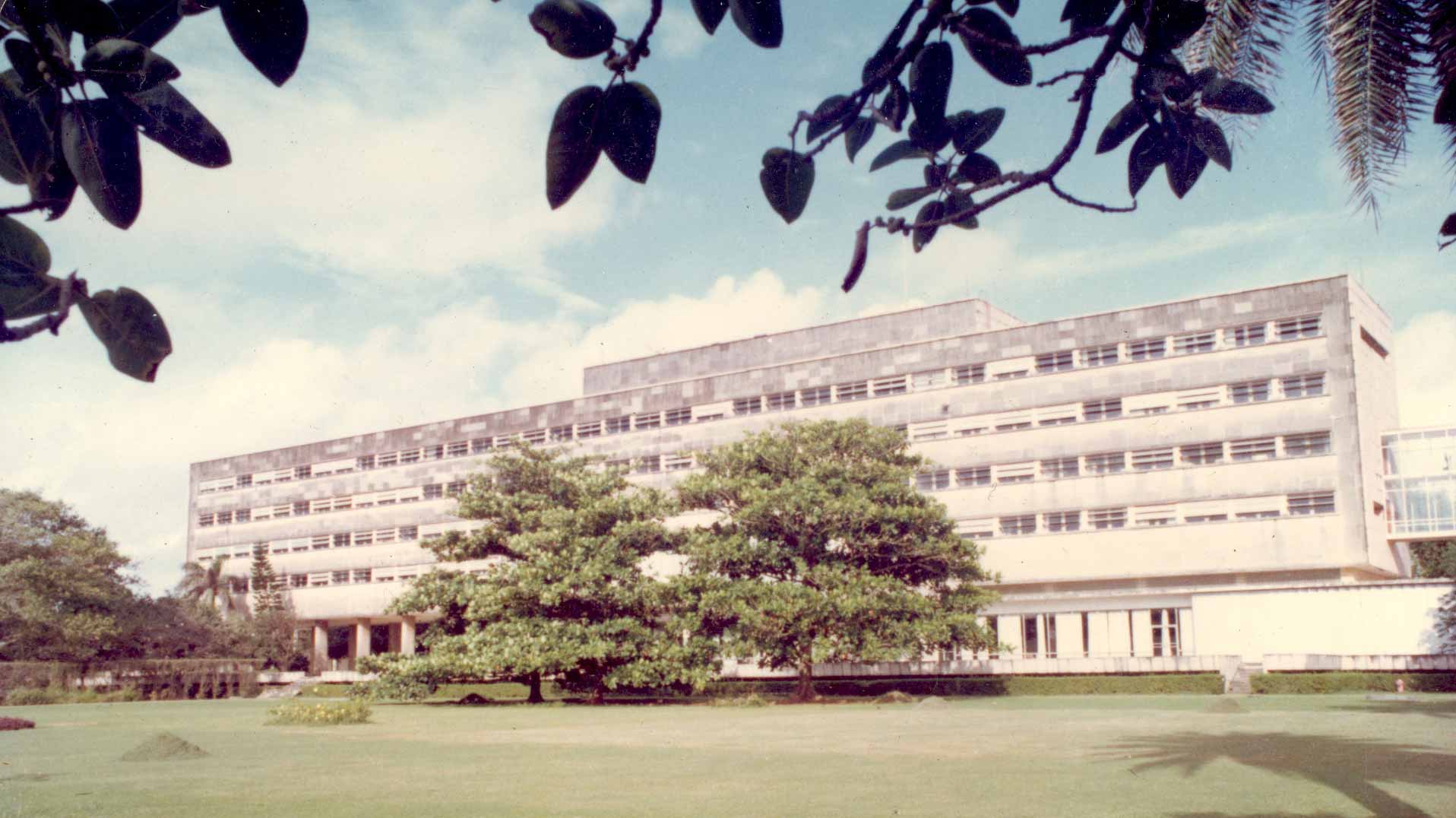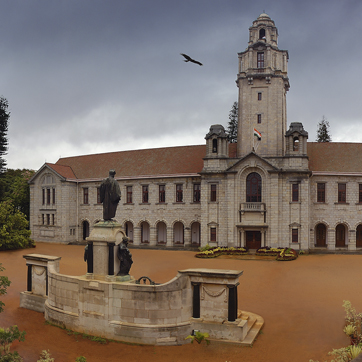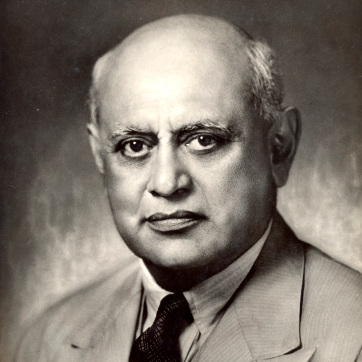Professor S Bhattacharya
Pre-independence India's scientific achievements were far ahead of its industrial successes. This was unusual for any country at that time, but there remained the need to improve India's scientific temper and strengthen the newly free nation's science infrastructure. These were the objectives that drove Homi J Bhabha and JRD Tata to pursue their vision of establishing the Tata Institute of Fundamental Research (TIFR) back in 1945.
Mr Bhabha — in the letter he wrote to the Sir Dorabji Tata Trust requesting financial assistance to get TIFR idea off the ground — talked about "creating a school of physics comparable to the best anywhere in the world." JRD, on the other hand, stressed the "progress" aspect while arguing the case for the institution. These visionaries, working together at a critical time in the nation's history, considered science an integral component to modern India's identity.

TIFR became the cradle of the country's atomic energy endeavour. The Institute wasn't just about science; it was also about discovering and delivering the benefits drawn from science to Indian society. Given that there was little scientific and industrial infrastructure at the time, TIFR came to play a crucial role.
The building of TIFR was quite interesting. Everything was done in-house, including the carpentry and such. We were at the frontiers of science, which meant that we had to create our own infrastructure. The fundamental research we were involved in then was of the atypical kind. Our early years were marked by this wide vision we had of what research needed to be done. What usually happens when you have so broad a vision is that you compromise on either quality or excellence. But TIFR managed to keep the course it had charted by making excellence intrinsic to its existence. This, to me, is one of the Institute's most remarkable triumphs.
We have done a large amount of experimental research that has blossomed into trend-setting initiatives. For instance, India's first digital computer was crafted at TIFR, back in 1957. This was a significant success by any yardstick. Today, you hear of technology that's spun off. In my reckoning, TIFR, more than any other Indian institution or industry, has spawned a variety of vital organisations.
In the years immediately following independence, India's goal was self-reliance. But, in terms of self-reliance there is a difference between science and technology. If you don't have a particular technology, you can try and develop it to, say, build a car indigenously. The Indica is a fine example of self-reliance. It does not look much different from other cars of its class, but its strength is that it is built indigenously. However, if the Indica had qualities its competitors didn't, then that would make it distinct. To make things indigenously and also make them distinct — that would be an extraordinary combination.
In science you cannot stop once you have crossed the indigenous hurdle; you also have to get to a given point before everybody else. Frontier science is about being the discoverer. If someone has discovered something, you cannot go to your lab and rediscover it.
Today, India has turned the corner. It is a more confident country and its infrastructure has improved tremendously. Catching up is no longer an achievement; we have to be up there with the best. Therefore, that part of TIFR's original charter — being at the frontiers of science — remains relevant, but being self-reliant and developing infrastructure is secondary. In that sense the continuity of the vision articulated by Mr Bhabha and JRD has been preserved.
TIFR now functions differently, and so it must. If it does not it will be frozen in an earlier time, which means it would fail in its mission. Some of our activities have changed down the years and this process will continue as we chart a new course that will, in its details, be somewhat different from the past, but still stay faithful to the original idea.
We are now trying to set a standard by saying that we are not going to applaud if our people repeat something that somebody else has done. We will only applaud if you are the first one to discover something. Earlier, to be able to produce something was an accomplishment of a kind. That is no longer true. But we had to go through that period to get where we currently are. An excellent institution must be able to rediscover and reinvent itself frequently. And that is one of the strengths of TIFR.
The Institute had many successes in the early years of its existence and that, in a way, was a problem. An institution is much more alert if it is in trouble. When an institution is doing well constantly, the high level of confidence generated can sometimes lead to complacency. For TIFR, a successful organisation by any measure, the question now is how to take an outstanding institution and make it truly exceptional. It's a more complicated struggle, requiring a new point of view and a course of action that's consistent with the times we live in.
We want to make sure we get the best people. This is a huge challenge because, financially speaking, we cannot provide the kind of salaries that some of our competitors around the world do. But we try to even the playing field as much as possible so that we can compete with the best. Apart from salaries, we provide a work environment that's as good as any other, and in some ways better.
Without funding you cannot do research. We have a steady source of funds, but there is a flip side to this equation. Steadfast support can make you complacent, so we have to ensure that support is earned, and not secured just as an entitlement. We receive tremendous backing from the Department of Atomic Energy, which takes an enlightened view of the long-haul factor. We have a beautiful campus and excellent infrastructure, with the finest machines and the latest technology equipment. Our libraries are among the best anywhere and we have good housing facilities.
Youth is the future, always has been and always will be. Given that reality, we have to understand, hard as it is, that the basic sciences are not an attractive career for today's youngsters. And youth are our lifeblood. If bright young people don't do science, where will our next generation of scientists come from? This is where we now have to concentrate our energies.
Earlier, we did not get involved in the education bit; we did not feel the need to. Our education system is not in good shape, particularly in the basic sciences, and — this is my personal opinion — leading institutions such as TIFR have been short sighted in not engaging with this system. It is a crisis that we have brought upon ourselves. University systems are in distress and we need to be involved there.
We are making a beginning in this sphere by starting an integrated PhD programme. It's our grand plan, a cradle-to-grave programme for students from 12th class upwards. We have a two-pronged strategy: first comes a 'nurture programme' for young students, followed by an advanced programme for graduates. Generally, our best and brightest students go to institutions such as the IITs, because they think that's the safer, more lucrative option as a career. But a large number of them may continue in basic science if we can compensate by having a first-class education programme.
Under the TIFR umbrella, the Homi Bhabha Centre for Science Education is putting in place the nurture programme for engineering students. We also want to capture students who go abroad for their MSc or PhD and take them into our own programmes. We have now become a deemed university and can give them the degrees they seek. To get young people and give them a quality education — that's the top item on my agenda.
TIFR has had a good run of more than 50 years, but the times are changing, the economy and society are changing. We have to adapt to this new era and we can do that by incubating our own original ideas. We may have grown a little too big, but in the frontier sciences largeness does not bring quality. We need to ensure that our centres have significant autonomy to forge their own destinies. The governing structure set up by the founders, with representatives from the Government of India, the Sir Dorabji Tata Trust and the Government of Maharashtra, is ideal. No one group dominates, which means the Institute can retain its autonomy.
Today everybody talks about being global, but TIFR has been global in its outlook since its birth. We have had some significant accomplishments. The GMRT telescope is one of its kind and the best in the world for what it does. Our scientists discovered a new class of superconductors. Many of our students have gone abroad to teach. We've had many distinguished visitors, among them Nobel laureates John Nash and Stephen Hawking. In a sense, we are the bridge between our community and the world.
We have to recognise that our original charter requires us to act differently. We have to set the highest standards for accomplishments, not third-world standards but the best global standards. This institute is uniquely placed to do this — and I believe we can do it.
Fact file
- June 1, 1945: TIFR begins life at the Cosmic Ray Research Unit in Bangalore [now Bengaluru]. Six months later the facilities moved to Bombay [now Mumbai] (Kenilworth on Peddar Road).
- January 15, 1962: Prime Minister Jawaharlal Nehru inaugurates the Institute's new 15-acre campus at Navy Nagar in Bombay.
- Initial research was carried out in the areas of cosmic rays, high-energy physics, theoretical physics and mathematics. Later, the Institute expanded its research umbrella to embrace nuclear physics, condensed matter physics, computer science, geophysics, molecular biology, radio astronomy and science education.
- TIFR's pioneering work led to it designing India's first digital computer (TIFRAC).
- TIFR has three schools (School of Mathematics, School of Natural Sciences, School of Technology and Computer Sciences) and as many centres (the Homi Bhabha Centre for Science Education in Mumbai, the National Centre for Radio Astrophysics in Pune, the National Centre for Biological Sciences in Bengaluru).
- The Institute also runs four facilities: the Giant Meterwave Radio Telescope at Kodad near Pune; the High-Energy Cosmic Ray Laboratory at Udhagamandalam in Tamil Nadu; the High-Energy Cosmic and Gamma Ray Laboratories at Pachamarhi in Madhya Pradesh; and the National Balloon Facility in Hyderabad.
The author is the former director of the Tata Institute of Fundamental Research.








